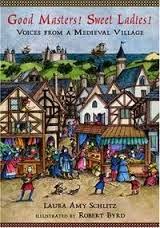Eleazar Resendez
LSSL 5360
October 30, 2014
Textbook
Assignment #4
 Bartoletti, S.
(2005). Hitler Youth: Growing up in Hitler's shadow. New York:
Scholastic Nonfiction.
Bartoletti, S.
(2005). Hitler Youth: Growing up in Hitler's shadow. New York:
Scholastic Nonfiction.
When talking about Nazi Germany, most people discuss the
party’s ideology, and its effects in Europe. The atrocities left by the
Hitler-led group are also described, as well as their eventual demise. In her
book, Hitler Youth: Growing up in Hitler’s Shadow, Susan Bartoletti takes a
different approach when discussing that era in German history as she focuses on
the “Hitlerjugend” or the Hitler Youth. Through extensive researc Thanks to the writings these individuals left
behind, Bertoletti is able to show the reader what the youth of Germany and its
neighboring countries went through during the years before, during and after
World War II. Young adolescent readers will be taken aback by what children
their age went through as Hitler built his callous army of desensitized
teens. The death and destruction
non-Jewish German children participated in as well as the suffering many Jewish
sympathizers went through, is all documented and cited in this gripping work of
non-fiction.
h, the author
managed to compile the writings and photographs of some of the most influential
members of the children’s division in the Nazis regime.
Curtis, C. (1995). The
Watsons go to Birmingham--1963. New York: Delacorte Press.
Kenny Watson thought his life was complicated. He was
expected to survive the cold frigid weather of Michigan, and the constant
bullying of his brother, Byron. Little did Kenny know, his life was about to
get a lot more complicated when his family decides to take a summer trip to
Birmingham, Alabama. Set around the civil rights era (1963) in the segregated
southern city of Birmingham, this story focuses on a boy’s need to brave the
perilous environment he finds himself in. Kenny is not oblivious to the race
issues going on in the south, but it is only until he witnesses it firsthand
that he realizes how sad the problem is.
Also, his brother discovers that he can channel his rage for a good
cause. It is because of his brother that
Kenny is able to overcome his fears, and begin his new life as an assertive young
adult.
 Nelson, K. (2008). We
are the ship: The story of Negro League baseball. New York: Jump at the
Sun/Hyperion Books for Children.
Nelson, K. (2008). We
are the ship: The story of Negro League baseball. New York: Jump at the
Sun/Hyperion Books for Children.
In his book, We are
the Ship, Kadir Nelson presents the side of baseball history most people
aren’t even aware exists. Since its
emergence in the 1920’s until its fall after World War II, Negro League
baseball has undoubtedly left a great legacy in baseball sport’s history even
if most casual fans don’t know it. Set from the turn of the century, on through
the roaring twenties, and later the depression and war eras, We are the Ship takes its reader through
the rural and segregated South and on to the big cities of Chicago and New
York. Written as a firsthand account,
the author’s style is so realistic that at times the reader might question if
Kadir Nelson was actually riding along with Negro Baseball great’s such Josh
Gibson and Satchel Paige during those time periods. Baseball fans in particular
will delight in knowing all stats and stories are well documented and carefully
cited at the end, and the book‘s foreword is written by one of the baseball
legend discussed in the book, Hank Aaron.
In her book, Good
Masters! Sweet Ladies!: Voices from a medieval village, Amy Schlitz paints
a picture of just how tough life was in England during the middle ages. Written
to be performed as a play, Schlitz presents twenty two character monologues from
different walks of life, and brings them all together by showing how their
lives are intertwined. Though every character has his or her own conflicts that
require resolution, all seem to be impeded by the lack of knowledge that seems
to abound modern day readers.
The style of writing she applies
allows readers to submerge themselves in the time period adequately. Though some of the vocabulary might seem
difficult, the author makes sure to define all challenging terms within the
same page. This allows for easy understanding of the material while still
keeping with the vocabulary of the era. For customs, events, and beliefs that
require more information to be provided, Schlitz utilizes the breaks in between
the monologues to add a concise yet detailed summary of this information as
well.

